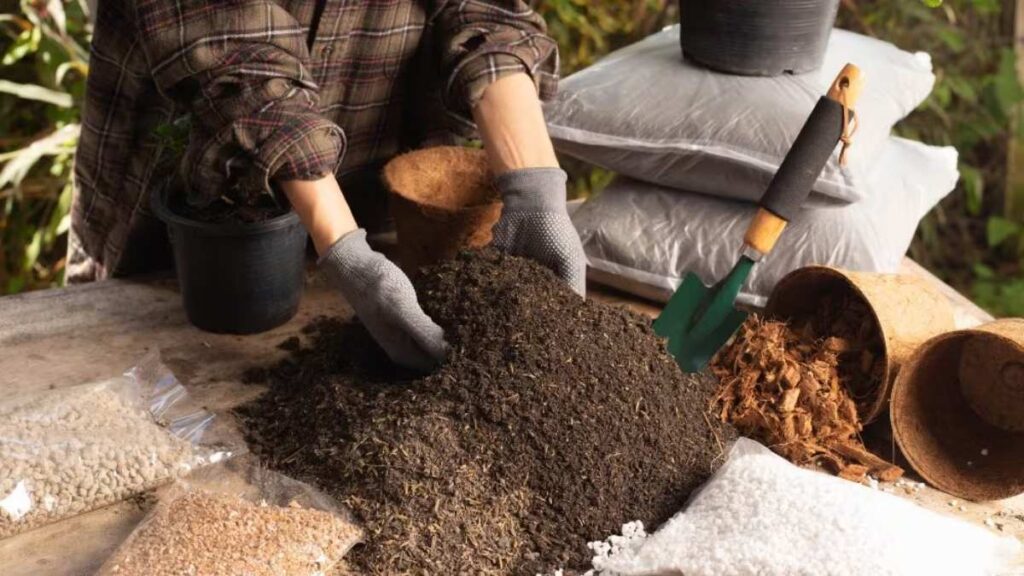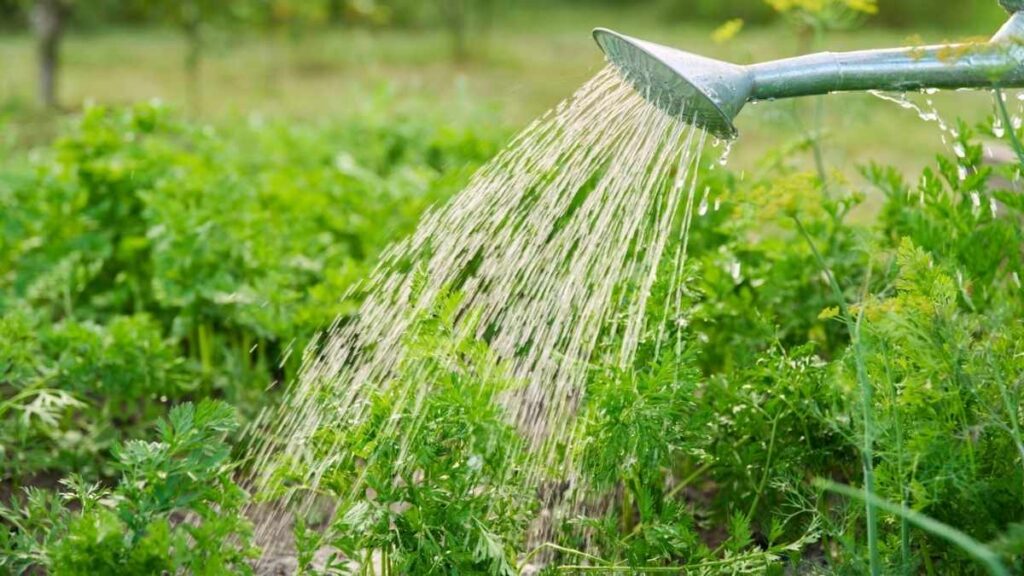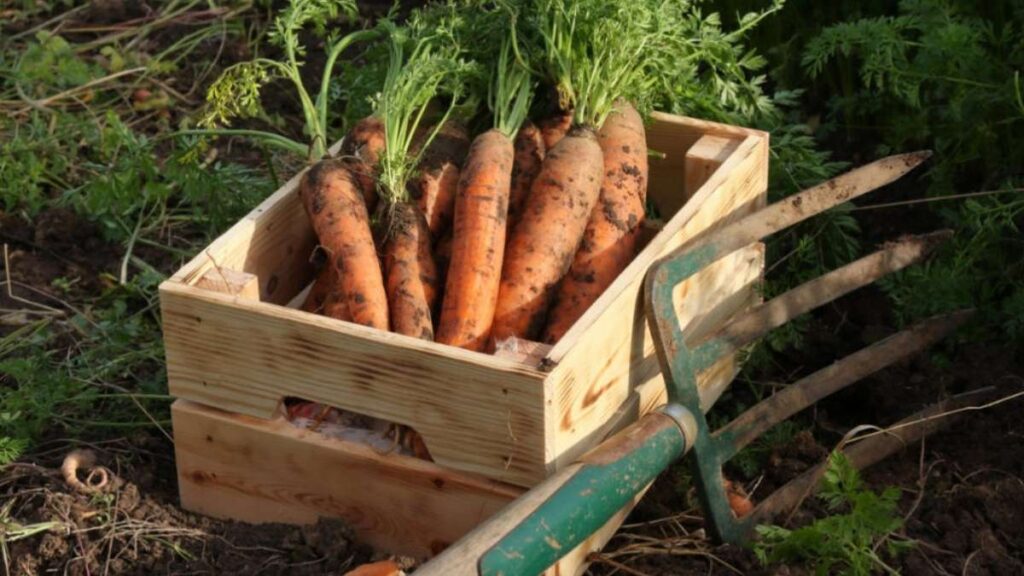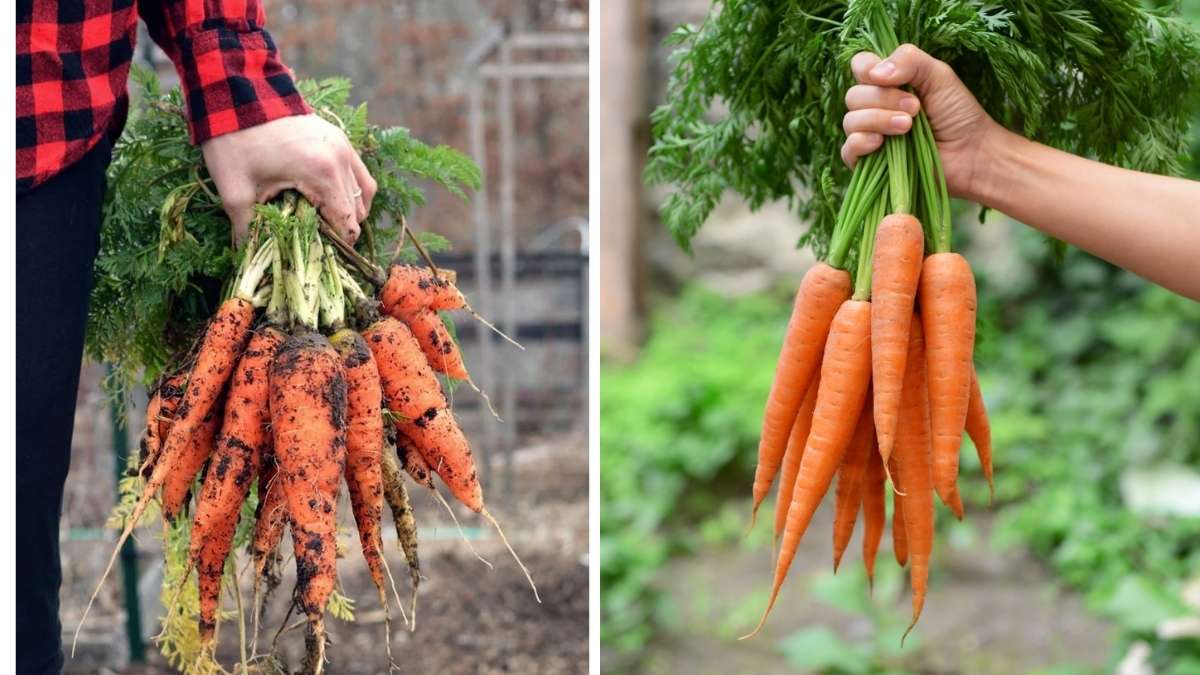Carrots are a perfect vegetable to grow in the cooler months, and October offers the ideal conditions for planting them. Whether you’re a seasoned gardener or a beginner, this easy 5-step guide will help you grow healthy, sweet carrots right in your garden or containers, even as the temperatures drop.
Step 1: Choose the Right Carrot Variety

Not all carrots are suited to the cooler fall weather, so it’s important to pick varieties that thrive in autumn’s milder temperatures. Look for fast-growing, hardy types that can handle the first frosts of the season.
Best Carrot Varieties for October Planting:
- ‘Nantes’ – Known for its sweet flavor and tender texture, this variety grows quickly, making it ideal for late-season planting.
- ‘Danvers 126’ – A classic variety that produces deep orange roots and stores well.
- ‘Autumn King’ – This variety is perfect for fall harvests, offering large, flavorful roots that can withstand cold temperatures.
- ‘Baby Carrots’ – For smaller, tender carrots, try a baby variety that matures in just a couple of months.
Step 2: Prepare the Soil and Containers

Carrots need loose, well-draining soil that allows their roots to grow deep without obstruction. In October, make sure to prepare your garden beds or containers properly for optimal carrot growth.
Soil Preparation Tips:
- Depth and Texture: Carrots need at least 12–18 inches of loose soil to grow well. If your soil is heavy or clay-like, amend it with organic compost to improve drainage and texture.
- PH Levels: Carrots prefer slightly acidic soil (pH between 6.0 and 6.8). Test your soil to ensure it falls within this range, adjusting with lime or sulfur if needed.
- Container Option: If space is limited, choose deep containers or raised beds for your carrots. Make sure they are at least 12 inches deep to allow for full root development.
Step 3: Planting Carrots

Once the soil is ready, it’s time to plant your carrot seeds. Carrots are easy to grow from seed and don’t require too much attention during the early stages.
Planting Tips:
- Spacing: Carrot seeds are tiny, so space them about 1 inch apart in rows. Thin the seedlings once they start to grow, leaving 2–3 inches between each plant for optimal growth.
- Depth: Plant seeds about 1/4 inch deep. Carrots need light to germinate, so cover the seeds lightly with soil or sand.
- Watering: Keep the soil moist but not soggy. A light misting or gentle watering every few days works best, especially during germination.
Step 4: Provide Sunlight and Watering

Carrots need full sunlight to grow, so pick a sunny spot for planting. Even in October, they need at least 6 hours of direct sunlight each day. Proper watering is also key to ensuring your carrots grow strong and sweet.
Sunlight & Temperature:
- Carrots grow best in temperatures between 55°F and 75°F (13°C to 24°C), which makes October a great time for planting in many regions.
- As temperatures dip, you may want to protect your plants with row covers or cloches to maintain warmth and prevent frost damage.
Watering Tips:
- Consistent Moisture: Carrots need steady moisture throughout their growing period. Water the soil regularly, but avoid soaking the plants, which can lead to rot.
- Mulch: Mulch around your carrots to retain moisture, regulate temperature, and keep the soil loose. Straw, grass clippings, or leaves work well.
Step 5: Care, Harvesting, and Storing Your Carrots
Carrots are relatively low-maintenance, but there are a few things to keep an eye on as they grow. With the right care, you’ll be harvesting sweet, crunchy carrots in just a couple of months.
Care Tips:
- Thinning: As the carrot seedlings grow, thin them out to prevent overcrowding. This will help the roots have enough space to expand.
- Weeding: Keep weeds under control, as they compete for nutrients and water. Use shallow hand weeding to avoid damaging the roots.
- Pest Control: Keep an eye out for pests like carrot flies, which can damage your crops. Covering your rows with fine mesh or using natural repellents like neem oil can help protect your carrots.
Harvesting and Storing Carrots:

- Carrots are ready to harvest when the tops of the roots are about 1 inch in diameter or more. Gently pull the carrots from the soil, avoiding damage to the roots.
- For longer storage, leave your carrots in the ground until after the first frost they often taste sweeter after a light frost.
- Once harvested, trim the tops off your carrots and store them in a cool, dark place. Carrots can be kept in the refrigerator for several weeks or stored in sand or sawdust for long-term storage.
Bonus Tips for Successful Fall Carrots:
- Rotate Crops: Avoid planting carrots in the same spot each year to reduce the risk of soil-borne diseases.
- Companion Plants: Carrots grow well with herbs like parsley and chives, which help deter pests.
- Frost Protection: If temperatures drop too low, use row covers or a cold frame to protect your carrots from frost.
Common Mistakes to Avoid:
- Overcrowding: Don’t plant carrots too close together. They need room to grow and thrive.
- Inconsistent Watering: Dry spells can lead to cracked roots, so keep the soil consistently moist.
- Harvesting Too Early: Give your carrots enough time to develop. Rushing the harvest leads to smaller, less flavorful roots.
Final Thoughts:
Growing carrots in October is a rewarding and straightforward process, even for beginners. With a little planning and care, you can enjoy a fresh, crisp harvest of homegrown carrots as the temperatures cool. Whether you have a small garden or just a few containers, October is the perfect time to get started and experience the joy of harvesting your own healthy, delicious carrots.




